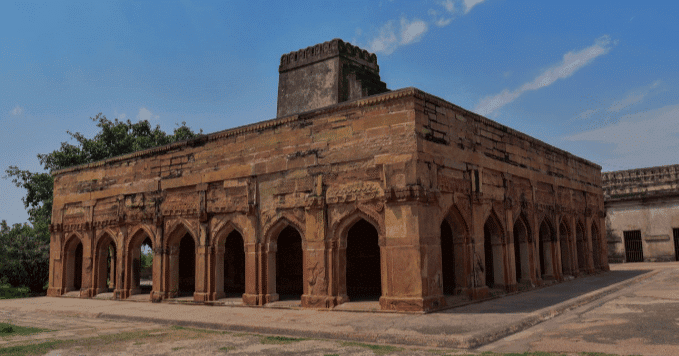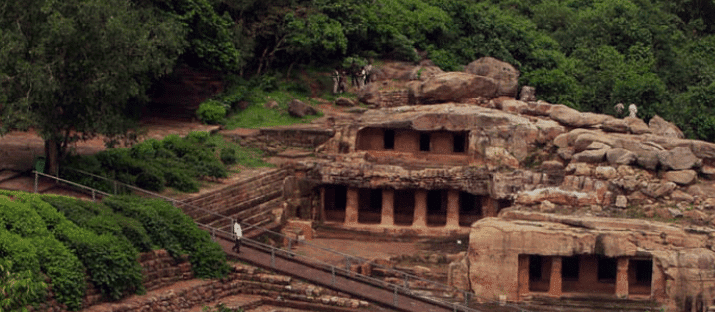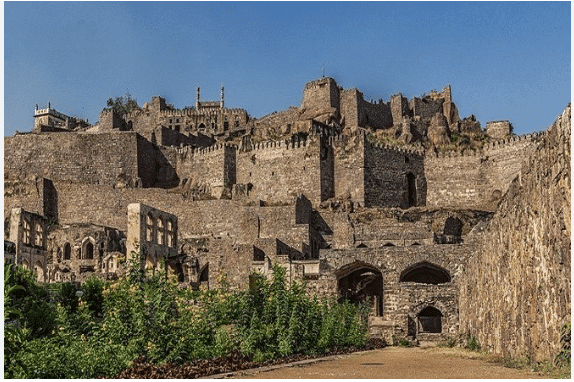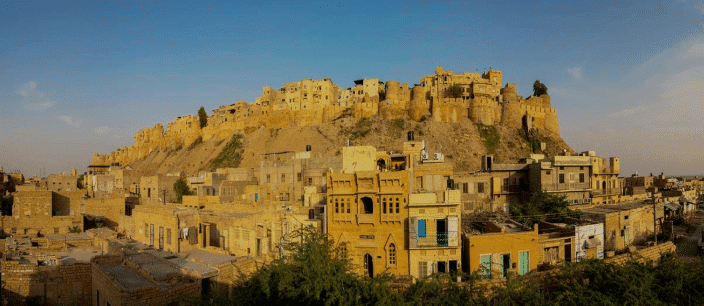Important Places of Medieval India | History for UPSC CSE PDF Download
Medieval India was a period marked by diverse rulers and dynamic changes, with regions under constant transformation due to invasions, trade, and cultural exchanges. The significance of certain locations during this period is often highlighted by their strategic importance, economic vitality, and cultural contributions. Understanding these sites is crucial for appreciating the complex historical and geopolitical landscape of medieval India.
Significant Locations
Attock: Situated at a strategic crossing of the Indus River, Attock has been historically important since Alexander the Great's time. During his invasion of India in 326 BCE, Alexander is believed to have crossed the Indus near this region(Ohind), marking the beginning of his advance into the Indian subcontinent. Its fort, constructed by Akbar in 1581, played a crucial role in controlling the movements between Central Asia and the Indian subcontinent, serving as a barrier against invasions from the northwest. In 1812, the region was invaded by Ranjit Singh. Earlier, it also witnessed a significant historical event when Mahmud of Ghazni defeated the forces of Anandpal near Ohind, close to Attock.
Bidar: Bidar, a district in the Gulbarga division of Hyderabad, was first captured by Muhammad Tughlaq in 1321. Later, in 1343, Shah Gangu, the founder of the Bahmani dynasty, took control of it. In 1430, Ahmed Shah Bahmani made Bidar his capital. After the Bahmani Kingdom declined, the city came under Barid Shah's rule starting in 1492. Later on, it was captured by the rulers of Bijapur. In 1624, Malik Amber plundered the city, and finally, Aurangzeb captured it in 1655.
Chaul: This city has been referred in the writings of foreign writers like Ptolemy. According to the Periplus, it served as a local trading centre. The Portuguese arrived there in 1505 AD and set up a factory in 1516. However, in 1521, the army of Bijapur burned the city. Despite this, Chaul remained a well-known centre for trade and commerce.
Question for Important Places of Medieval IndiaTry yourself:Which location in medieval India was known for its strategic importance in controlling movements between Central Asia and the Indian subcontinent?View SolutionChunar: Chunar was a famous fort town that was once captured by Prithviraj Chauhan. Sher Shah Suri received it as part of a marriage alliance. Later, in 1575, the Mughal Emperor Akbar captured it. After the decline of the Mughal Empire, Chunar came under the control of the Nawab of Oudh (Awadh).
 Chunar Fort
Chunar FortHampi: Hampi, known for its impressive ruins, was the site of the capital city of the Vijayanagar Empire. Nothing remains of the splendid palace except the basement of a few of its buildings. Two large stone platforms can still be seen—one is thought to be the base of the king’s audience hall, and the other is known as the throne platform, described by traveller Paes as the “house of victory.” Other notable structures include the Lotus Mahal, the elephant stables, and two towers wrongly identified as watchtowers of the women’s quarters. Several temples also still stand, the most famous being the temples of Pampapati, Vithalaswami, and Hazara Rama.
Raichur: Raichur, during the medieval period, was part of the Kampili kingdom, which was a dependency of the Yadava rulers. When Ala-ud-din Khalji conquered Devagiri, Kampili declared its independence but was soon captured by the Delhi Sultanate. The fertile region of Raichur Doab became a major conflict zone between the Bahmani Sultans and the Vijayanagar rulers, until Krishnadeva Raya finally captured it from the Bijapur Sultan.
Devagiri (Daulatabad): Devagiri (now known as Daulatabad) was established by Bhillama, a Yadava ruler, and became his capital. Hemadri, a noted writer and minister under Mahadeva, mentions this in his writings. In 1294 AD, Ala-ud-din Khalji invaded and looted Devagiri. Later in 1307 AD, Malik Kafur took its ruler, Ramachandradeva, to Delhi as a prisoner. After six months, Ramachandra was released and allowed to rule as a vassal. However, when his successor Sankaradeva defied the Sultan, Malik Kafur invaded again. After he withdrew, Ramachandra’s son-in-law Haripala took control, but in 1317 AD, Mubarak Khalji reconquered it. Later, Muhammad bin Tughluq moved his capital there and renamed it Daulatabad.
Udabhandapura (Walhand or Ohind): A historical site where significant battles were fought, including the decisive encounter where Mahmud of Ghazni defeated the Hindu Shahi rulers, marking a significant shift in the control of the region.
Question for Important Places of Medieval IndiaTry yourself:Which historical site was known for its resistance against invaders and played a pivotal role during the Mughal expansion in India?View SolutionWarangal: Warangal was the capital city of the Kakatiya dynasty. When Malik Kafur marched there, he was ordered not to harm the king if he agreed to surrender his wealth. Warangal's fort was heavily besieged, and the ruler submitted. Later, Ghiyas-ud-din Tughluq again besieged and annexed Warangal, renaming it Sultanpur. Eventually, the Muslim kingdom of Golkonda rose from the ruins of Warangal.
Srirangam: Srirangam, located near Tiruchi in Tamil Nadu, is an important centre of Vaishnavism and was a major hub for the teachings of Ramanuja. It is known for its large temple complex with tall gopurams, pillared halls, and long corridors. The temple was destroyed during Malik Kafur’s invasion, but the deity’s image was saved and moved to Tirupati. With the help of Kumara Kampana, it was later reinstalled at Srirangam.
Udayagiri: Udayagiri in Nellore district (Andhra Pradesh) was an important centre under the Vijayanagar Empire in the 14th century. Kapilendra of Orissa sent his son Hamvira to conquer the Tamil coastal areas, and Hamvira first took Udayagiri. Later, Saluva Narasimha recovered it in 1469–70, but it was once again captured by Purushottama of Orissa. Eventually, Krishnadevaraya defeated the Odriyas, and they never regained control over Udayagiri.
 Udayagiri and Khandagiri Caves
Udayagiri and Khandagiri CavesSalsette: Salsette, located on India’s western coast, was initially ruled by the Sultan of Bijapur before it became a Portuguese settlement. When the Portuguese took over, it led to conflict with Bijapur. Eventually, Bijapur agreed to let the Portuguese keep Salsette, but in 1739 AD, the Marathas captured it from the Portuguese.
Quilon (Kollam): Port city in Kerala, was ruled by Ravivarman during Ala-ud-din Khalji’s southern campaigns. Though he was a minor ruler, according to traveller Ibn Battuta, he treated Muslims with respect. The Muslim community there prospered and had its own Persian chief and judge. Quilon was a busy seaport with trade links to Pegu, Malacca, Sumatra, and beyond. The Portuguese later set up a trading factory there, and items like pepper and calico were exported from the city.
Raigad: Raigad became the capital of the Maratha Empire under Shivaji. It was here, in 1674 AD, that Shivaji was formally crowned as Chhatrapati in a grand ceremony, marking the beginning of his rule as an independent sovereign.
Golconda: Famous for its fort and as a market city for the diamond trade, Golconda was the seat of the Qutb Shahi dynasty, which played a significant role in promoting regional culture, literature, and art.
 Golconda Fort
Golconda FortKannauj: Once the site of the Kannauj triangle conflict among the Pratiharas, Palas, and Rashtrakutas, it was a prominent political and cultural centre in North India, known for its perfumes and as a hub of Sanskrit scholarship.
Madurai: An epicentre of Tamil culture and administration under the Pandyas, Madurai's Meenakshi Temple complex is an architectural and cultural landmark, reflecting the city's historical importance as a centre for trade and pilgrimage.
Thanjavur: The heart of the Chola dynasty, Thanjavur is noted for the Brihadeshwara Temple, a UNESCO World Heritage site, showcasing the zenith of Tamil architecture and a vibrant cultural life during the medieval period.
Question for Important Places of Medieval IndiaTry yourself:Which city was known for its significance in the spice trade and historical ties to Chinese, Arab, and European traders?View SolutionJaisalmer: Known for its strategic location on the trade routes across the Thar Desert, Jaisalmer's fort is a hallmark of Rajput architecture and resilience, playing a critical role in the trade and defence strategies of medieval Rajasthan.
 Jaisalmer Fort
Jaisalmer FortMultan: A prime city in the Punjab region, Multan was an important Islamic center known for its Sufi shrines. It played a crucial role in spreading Islam in the subcontinent and was a major hub for trade and scholarly activities.
Conclusion
These locations, each with its unique stories and legacies, are crucial for understanding the diverse and rich history of medieval India. They provide valuable insights into the era's political manoeuvres, cultural exchanges, and economic networks. For UPSC aspirants, a deep understanding of these places offers a holistic view of India's past, enabling a better grasp of historical processes and their outcomes.
|
216 videos|853 docs|219 tests
|
FAQs on Important Places of Medieval India - History for UPSC CSE
| 1. What are some of the most significant locations in Medieval India and their historical importance? |  |
| 2. How did the geography of India influence the significant locations during the medieval period? |  |
| 3. What role did trade routes play in the development of significant locations in Medieval India? |  |
| 4. Can you explain the cultural significance of important places in Medieval India? |  |
| 5. How did the political landscape of Medieval India shape the significance of various locations? |  |

















